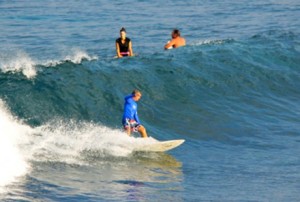How to Read the Waves
How to Read the Waves
The most important factors to consider during surfing are the ocean and the weather. Arguably both are unpredictable. Surfing is fun, exciting but not a piece of cake. It takes place in a dynamic, ever changing environment and before you head into the ocean, you must be familiar with the oceanic world and its demands. As we all know that surfing is an act of riding a wave and thus waves play a major role. The waves can induce fear, happiness and even frustration in a surfer. The huge waves are often dangerous and risky but even small waves can hit you with an impact. Water is not solid but one cubic foot of water weighs about a ton! So, you definitely don’t want to be hit by the waves again and again. In short, one of the main things you want to learn in surfing is how to identify and read the waves.
Reading the Waves
To be a highly skilled surfer, it is imperative that you are able to accurately analyze the waves and catch them. If you know how to read the waves, you are going to have a lot of fun rather than constantly watching your step. The following tips for reading the waves will be a big help in the open water.
the waves, you are going to have a lot of fun rather than constantly watching your step. The following tips for reading the waves will be a big help in the open water.
Be Aware of the Tide
The tides and waves go hand in hand. When the tide is high, the wave shows more energy. When the tide is low, the wave can either become larger, hollow or even close out. Find out about the conditions of the tides on your surf spot i.e if the beach break is affected by the tides, whether the tide is heading in or out, and what kind of water they best work with.
Examine the Shape of the Waves
Before heading out to surf, take some time to analyze the waves’ shapes. It will save you a lot of trouble during wave riding. The shape of waves is influenced by tides, currents, direction of a swell, size of the waves, and rate of development, wind, kelp and bottom contours. A wave can be like a wedge, a bowl or it can be hollow or peeling. Learn to perceive the details and soon you will have a keen eye for scanning the waves.
Be Able to Judge the Consistency
Check if the waves are regular, glassy, clean or erratic and choppy. If the waves are inconsistent and shifty, you will have to move around a lot which can be tiring.
Find the Lumps
Scan the horizon to identify the lumps. They are a set of waves which you want to catch and ride. Catch the wave as soon as the swell passes by you and turn into a wave and eventually break. The waves should be caught when they are near their peak.
Don’t worry, you will get a hang of it soon…
Just like everything else, reading the waves accurately will take time and experience. Keep assessing and it will become quite easy!



















